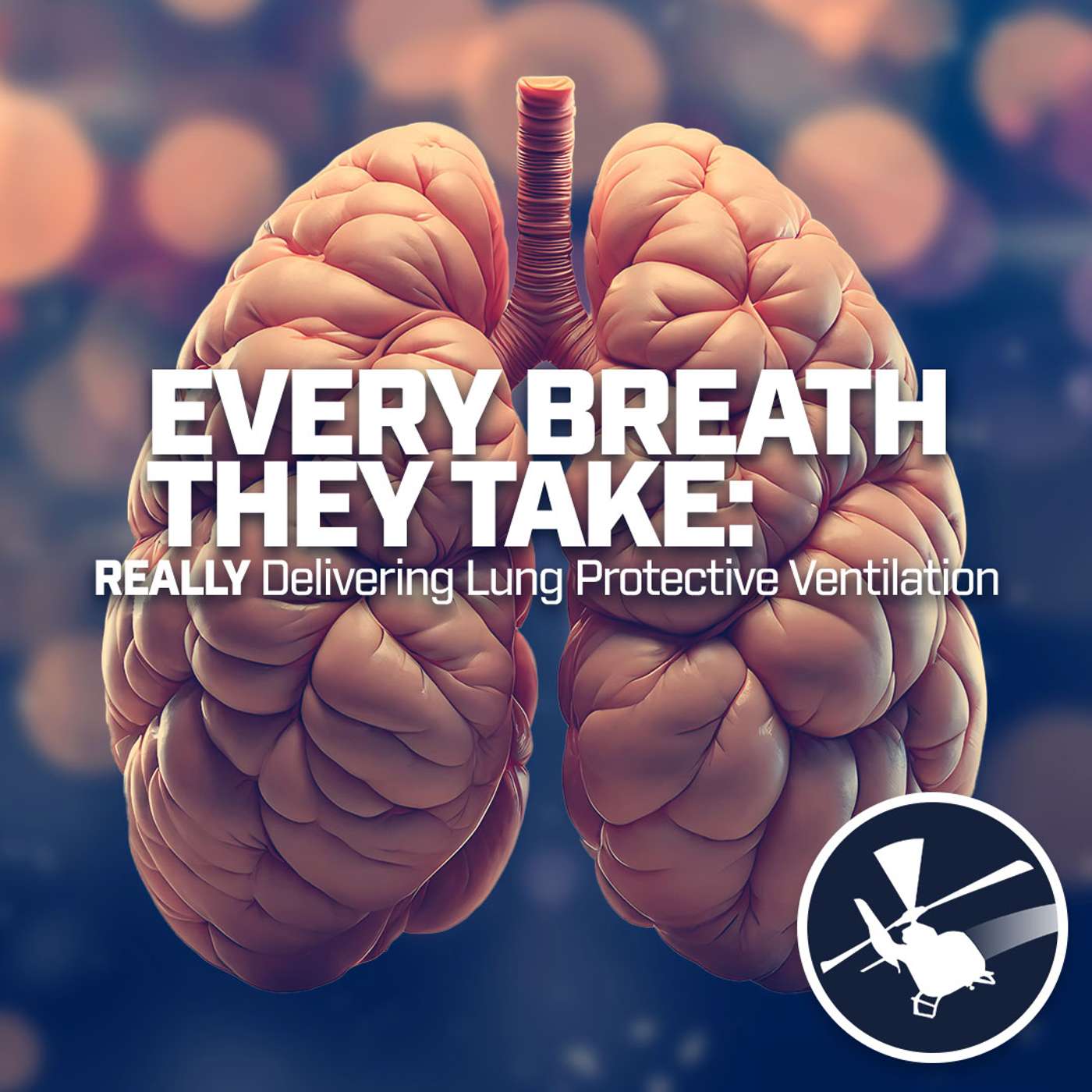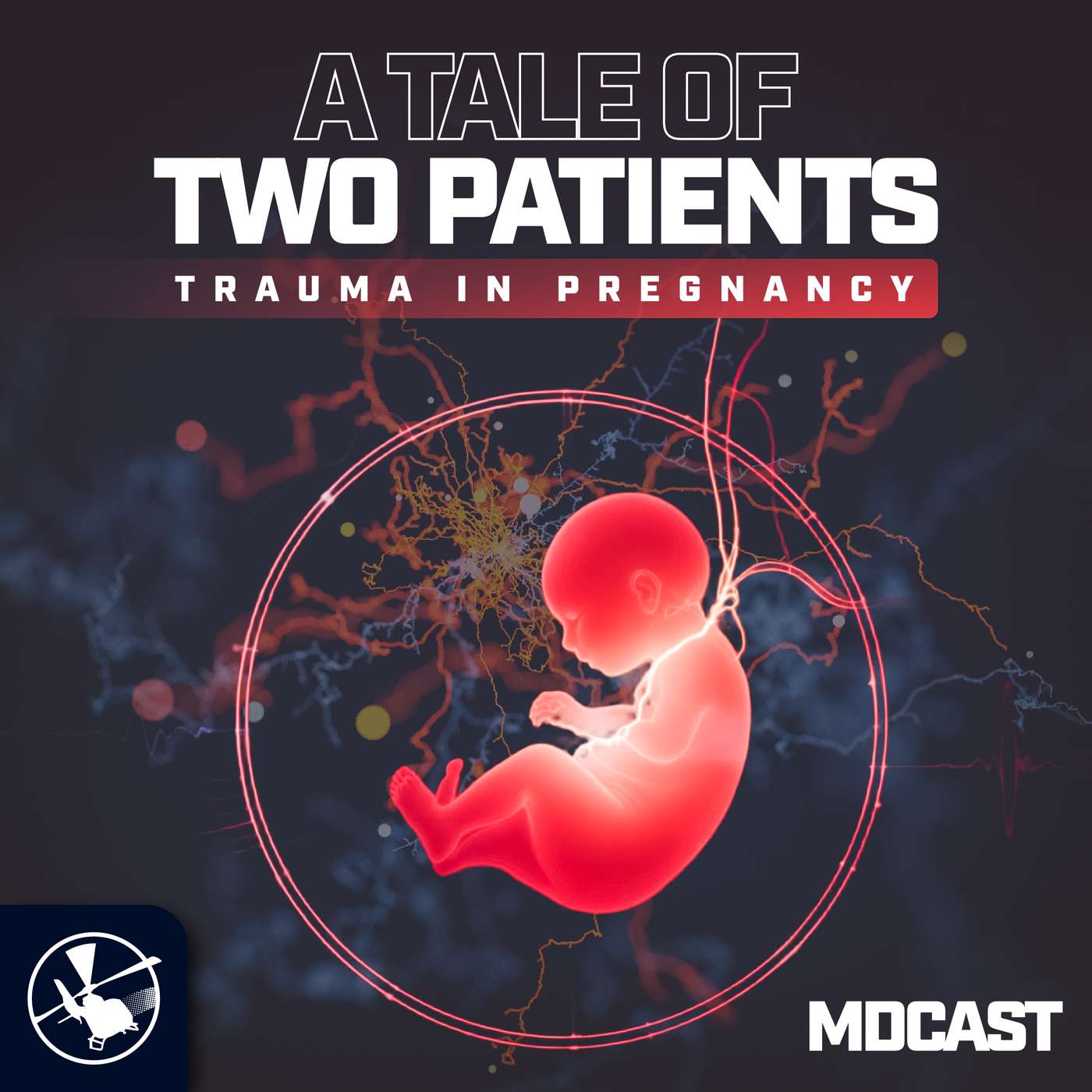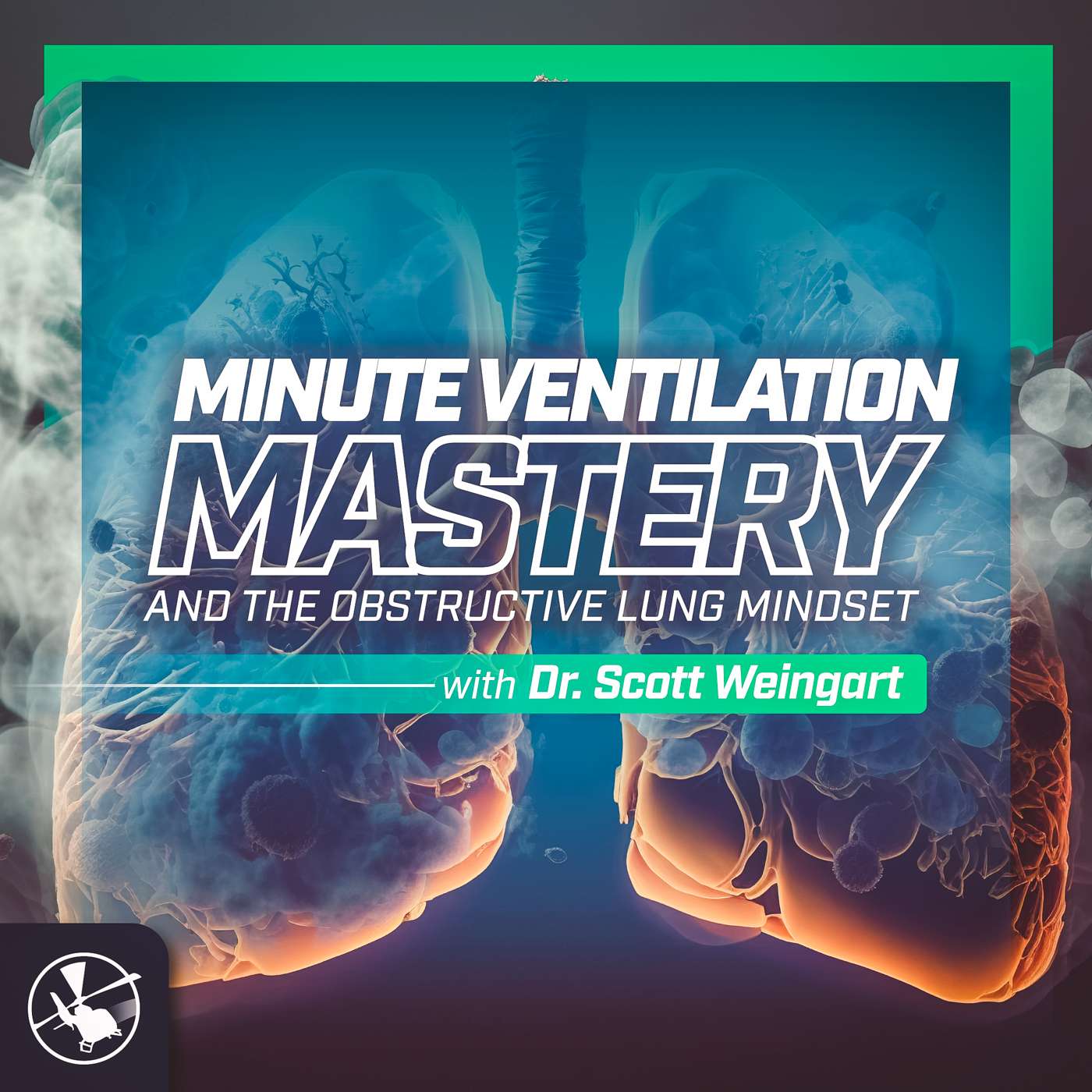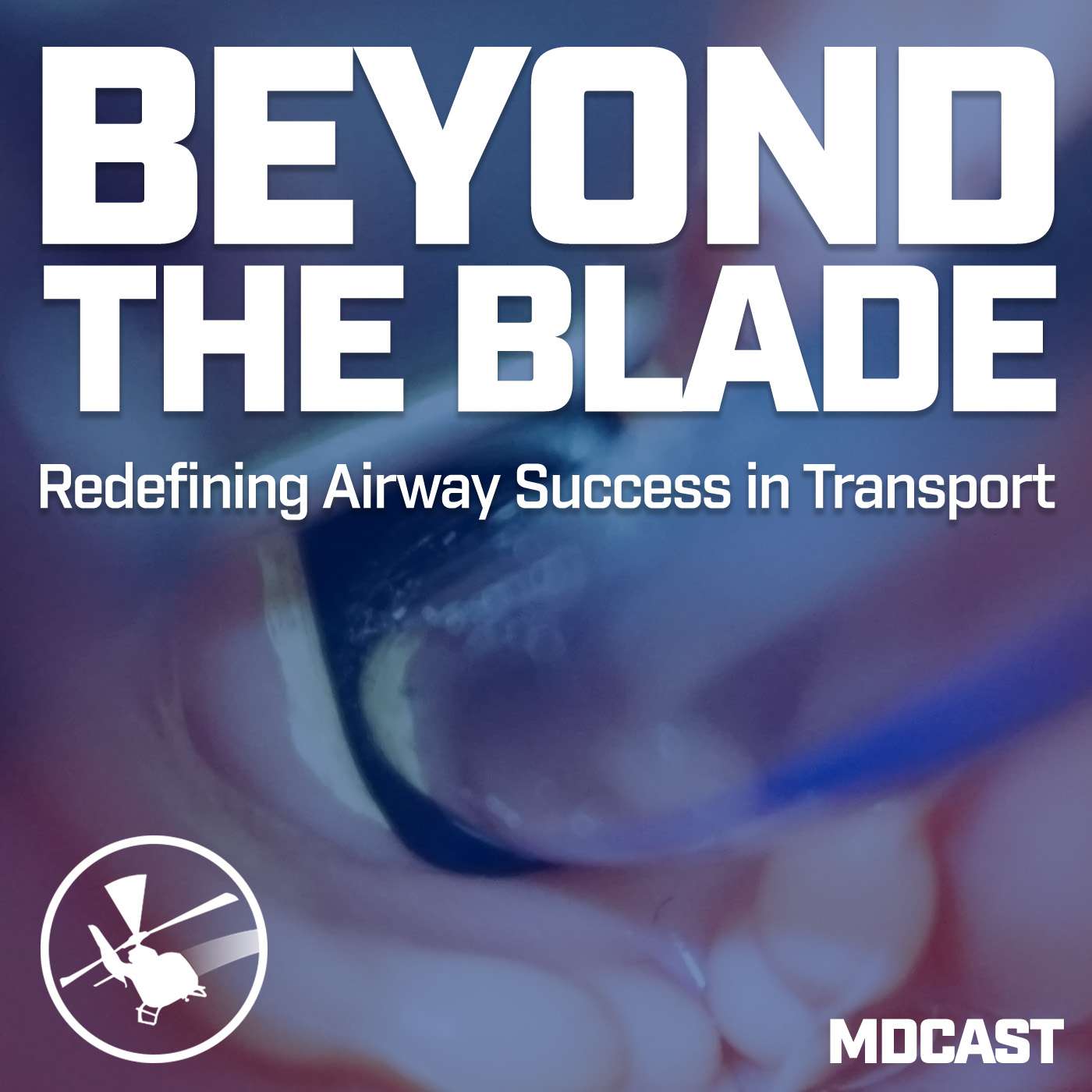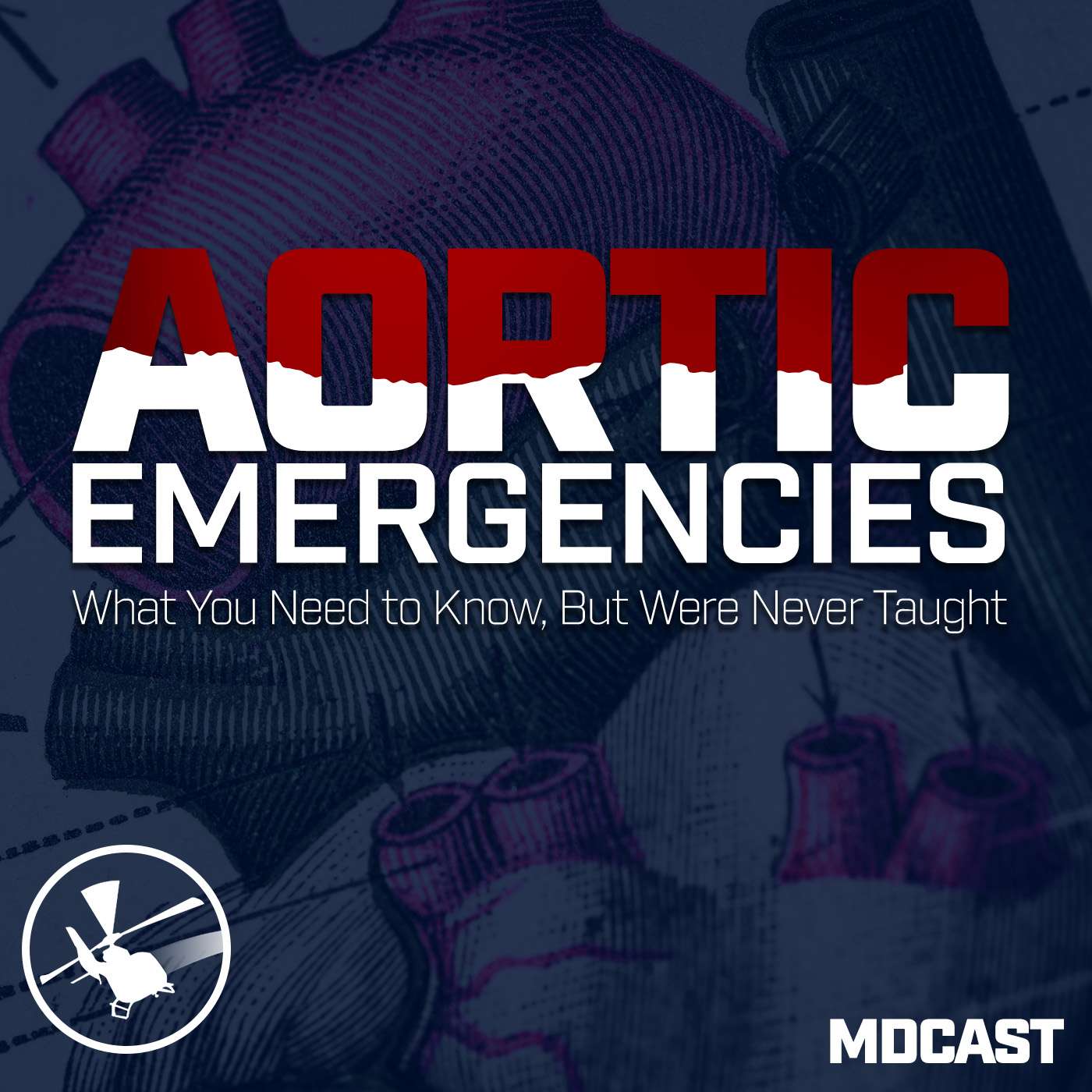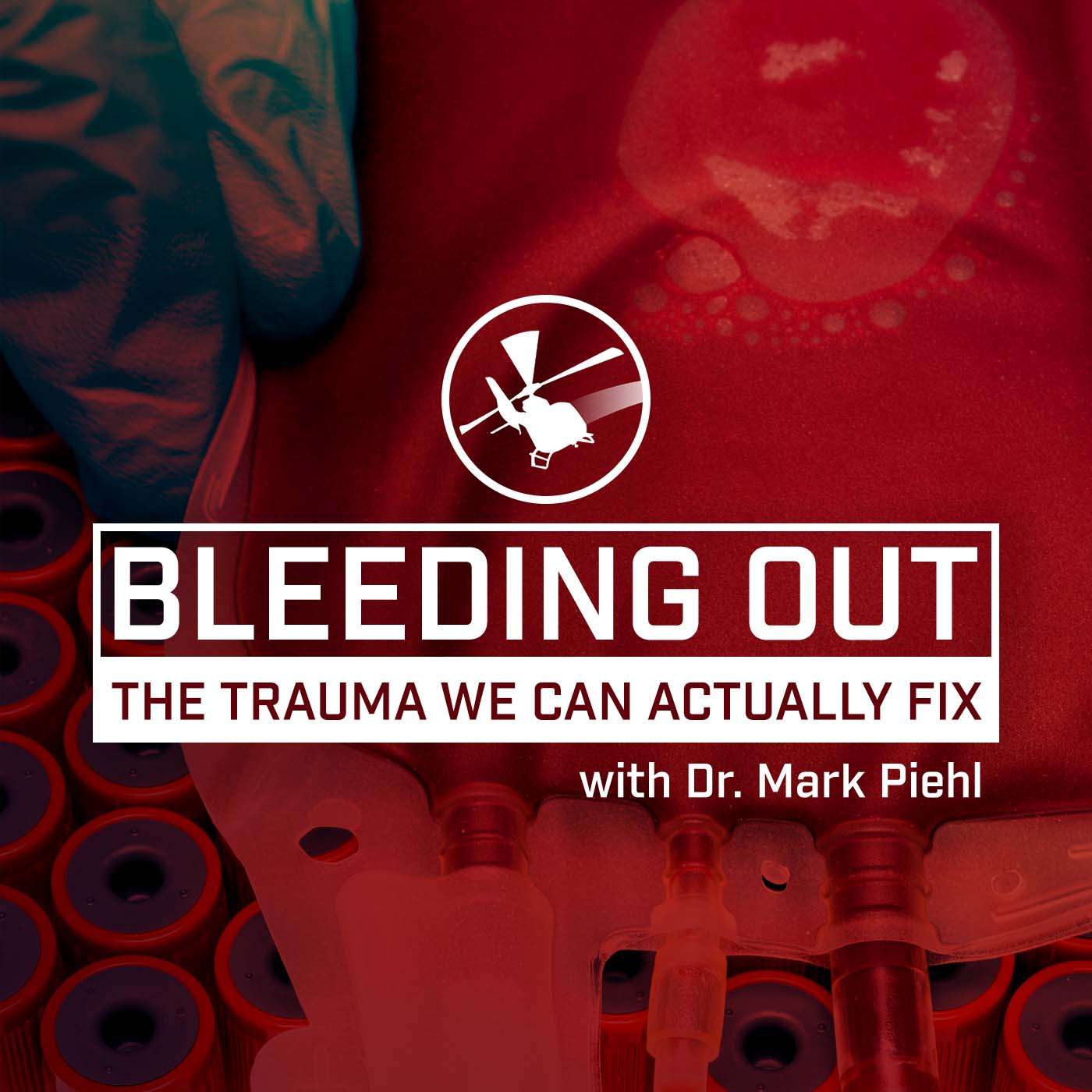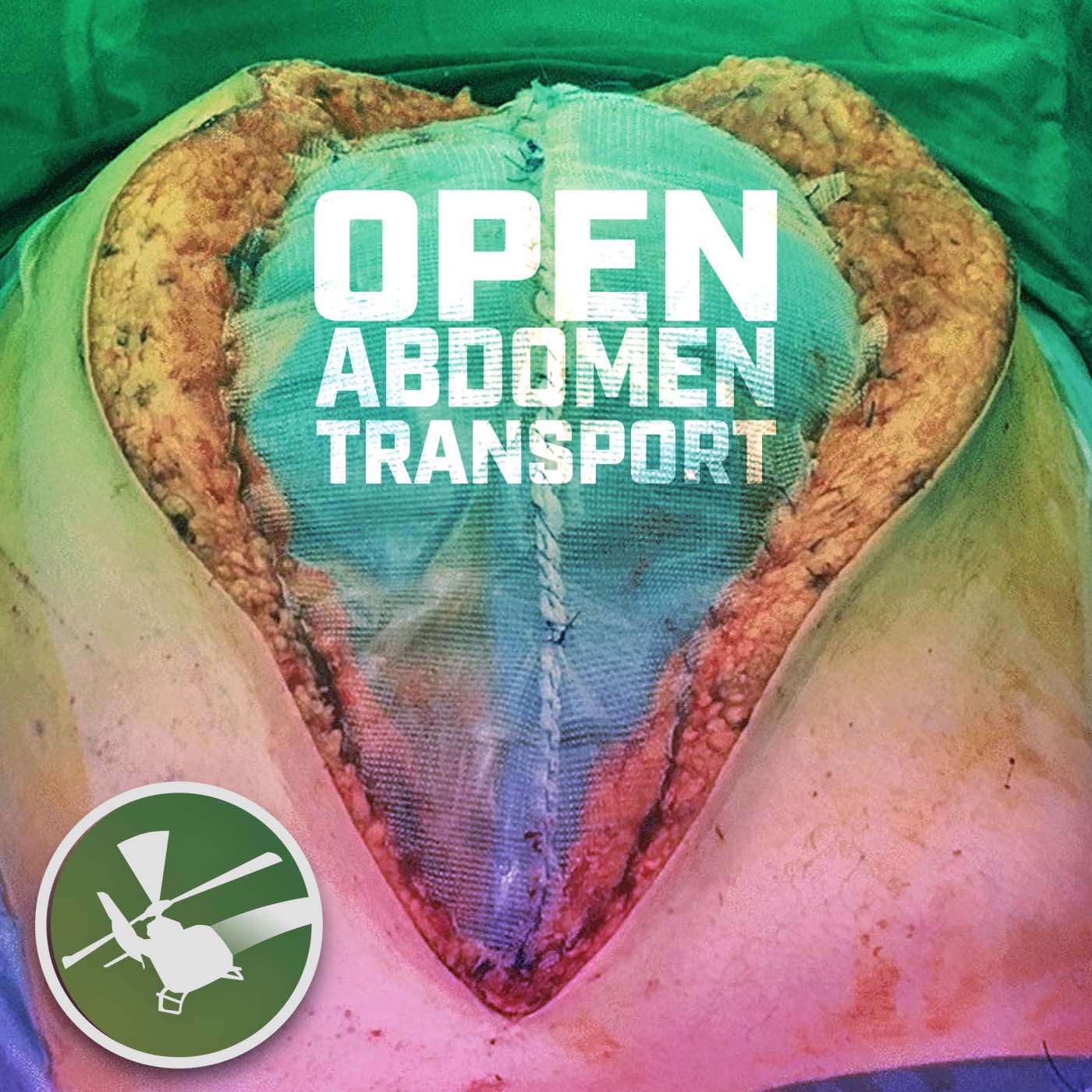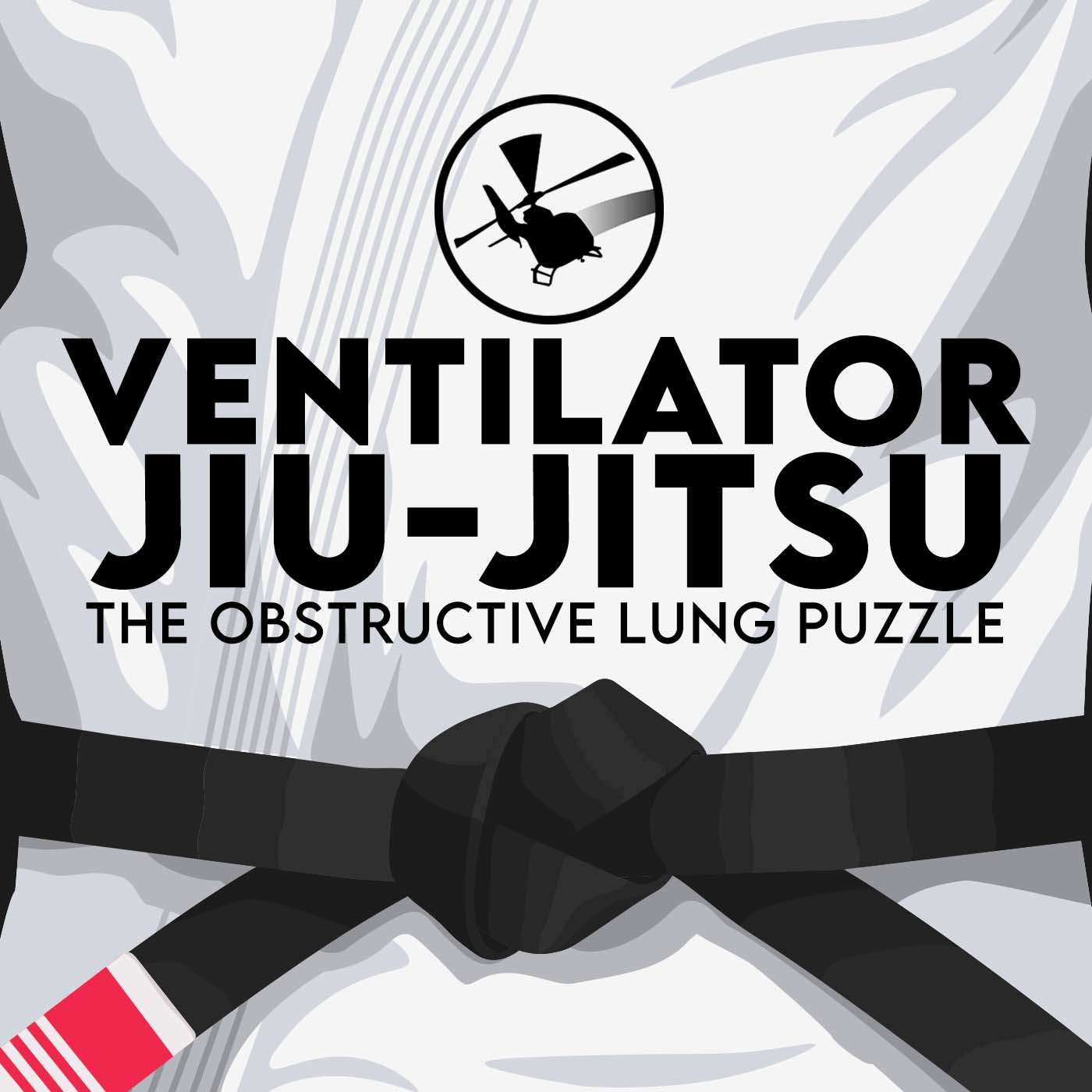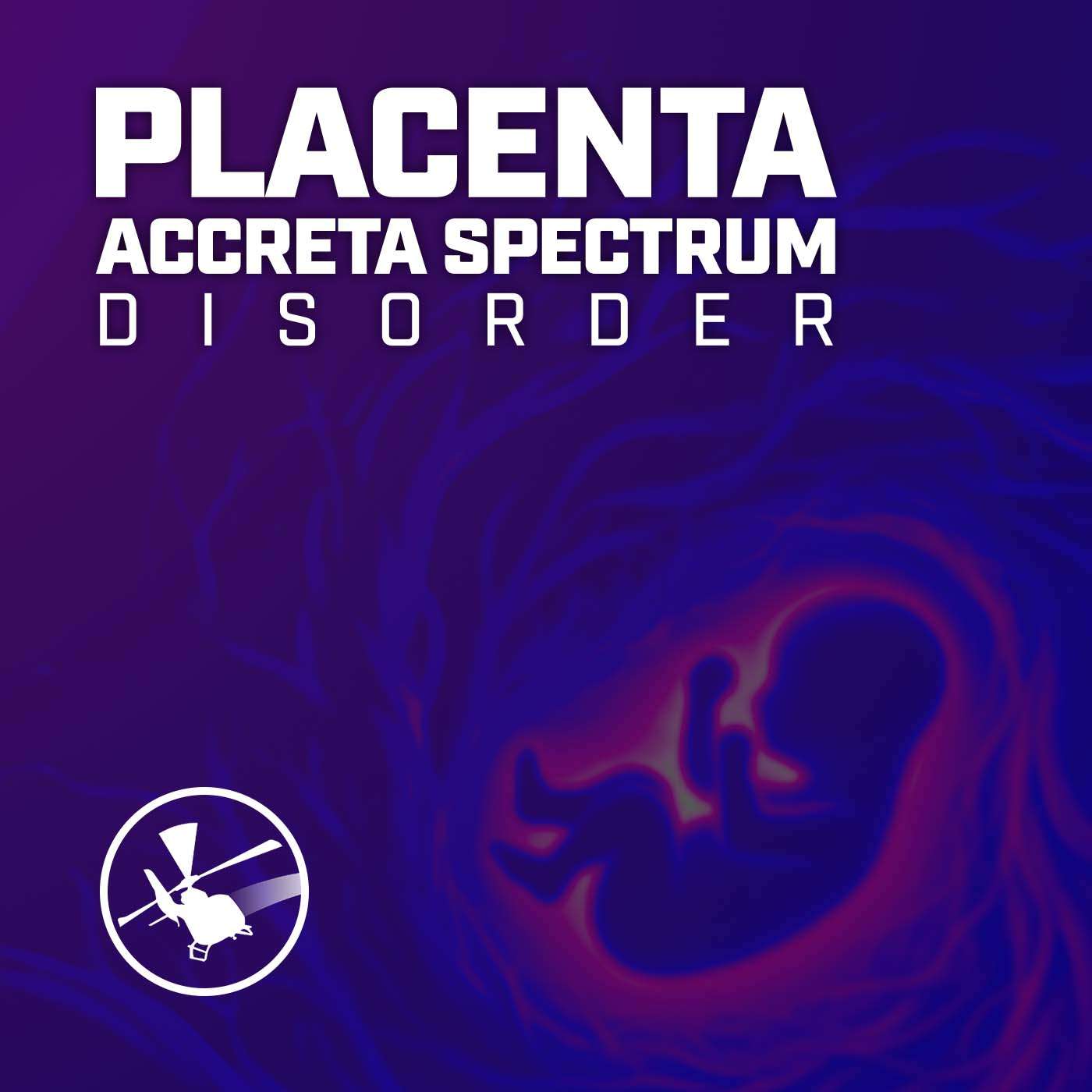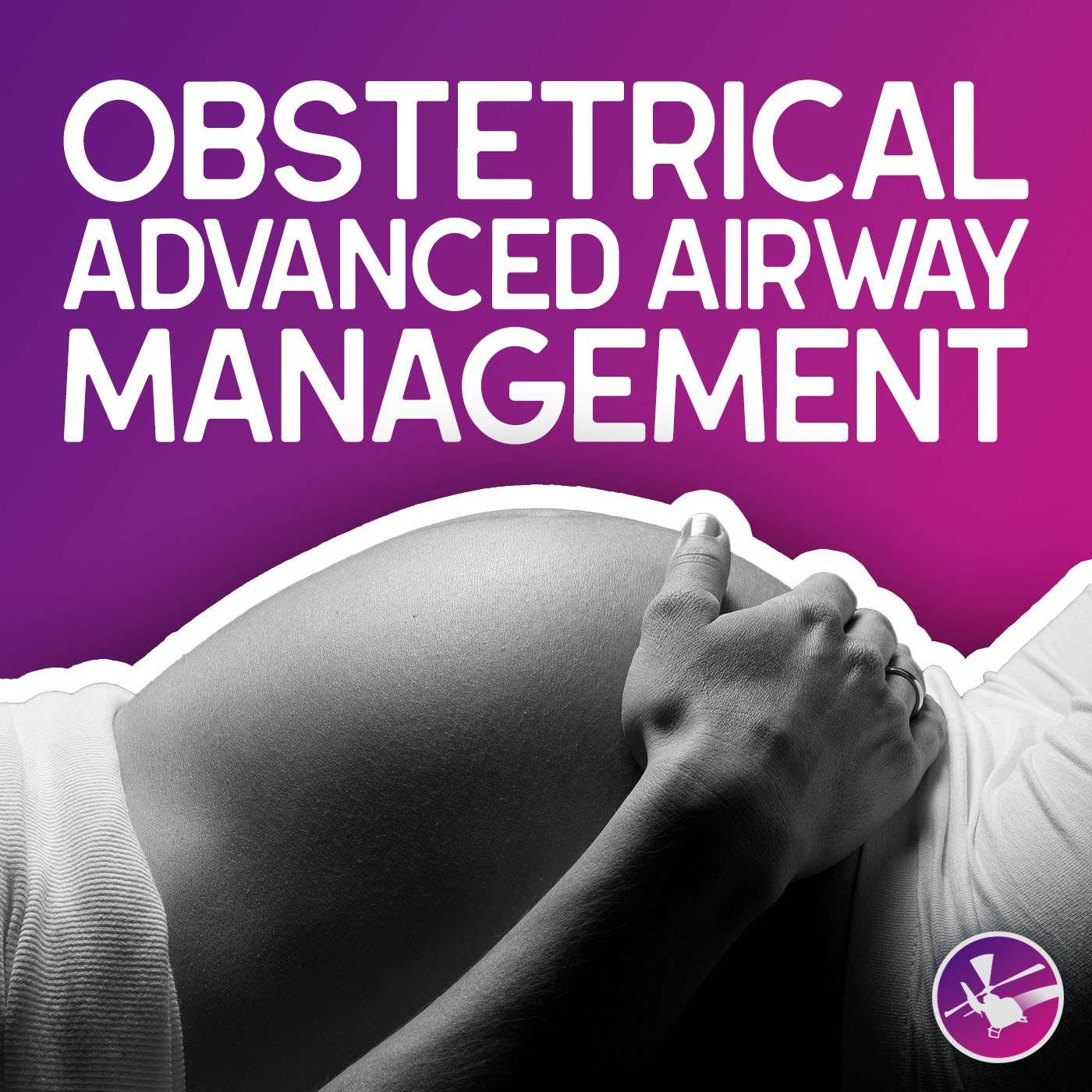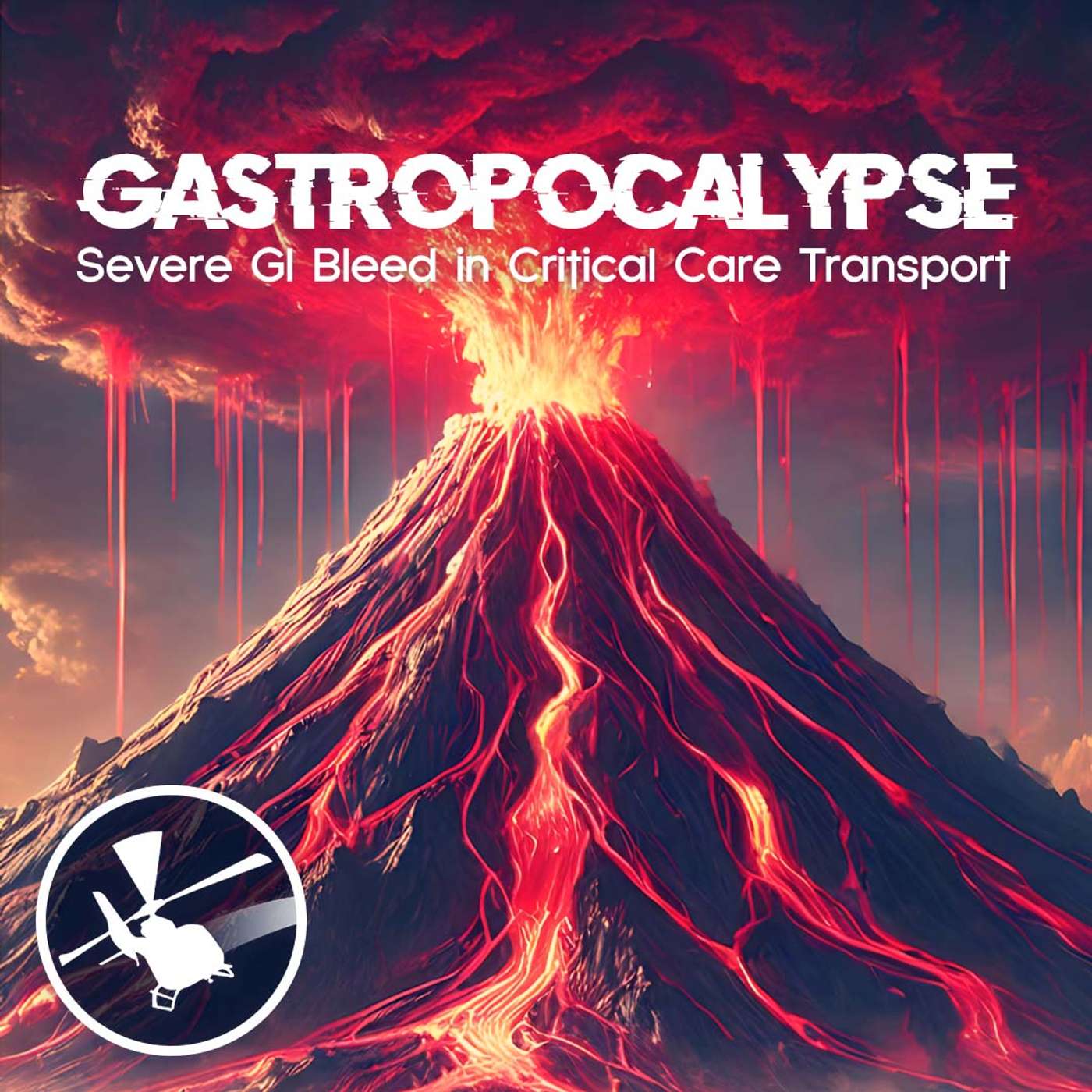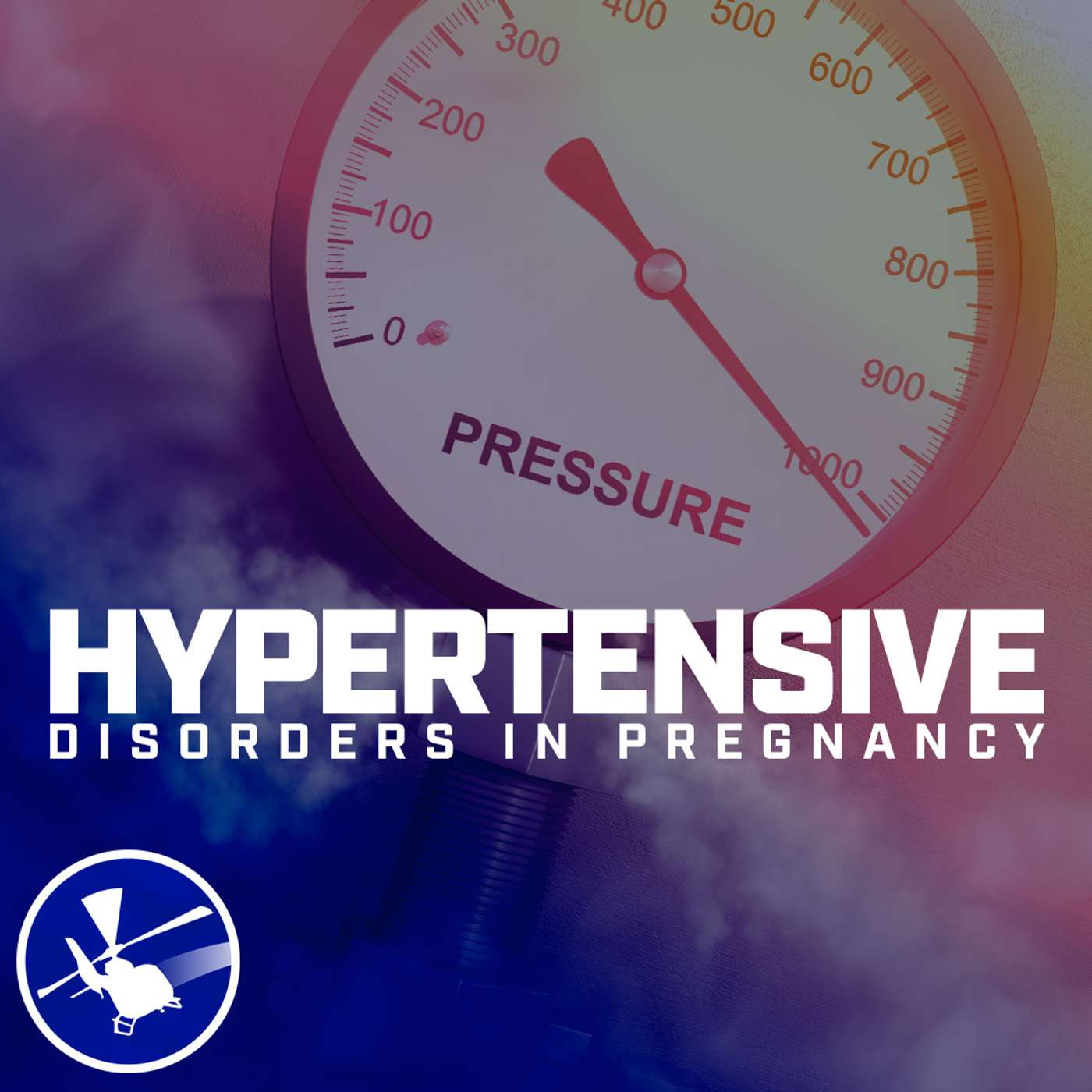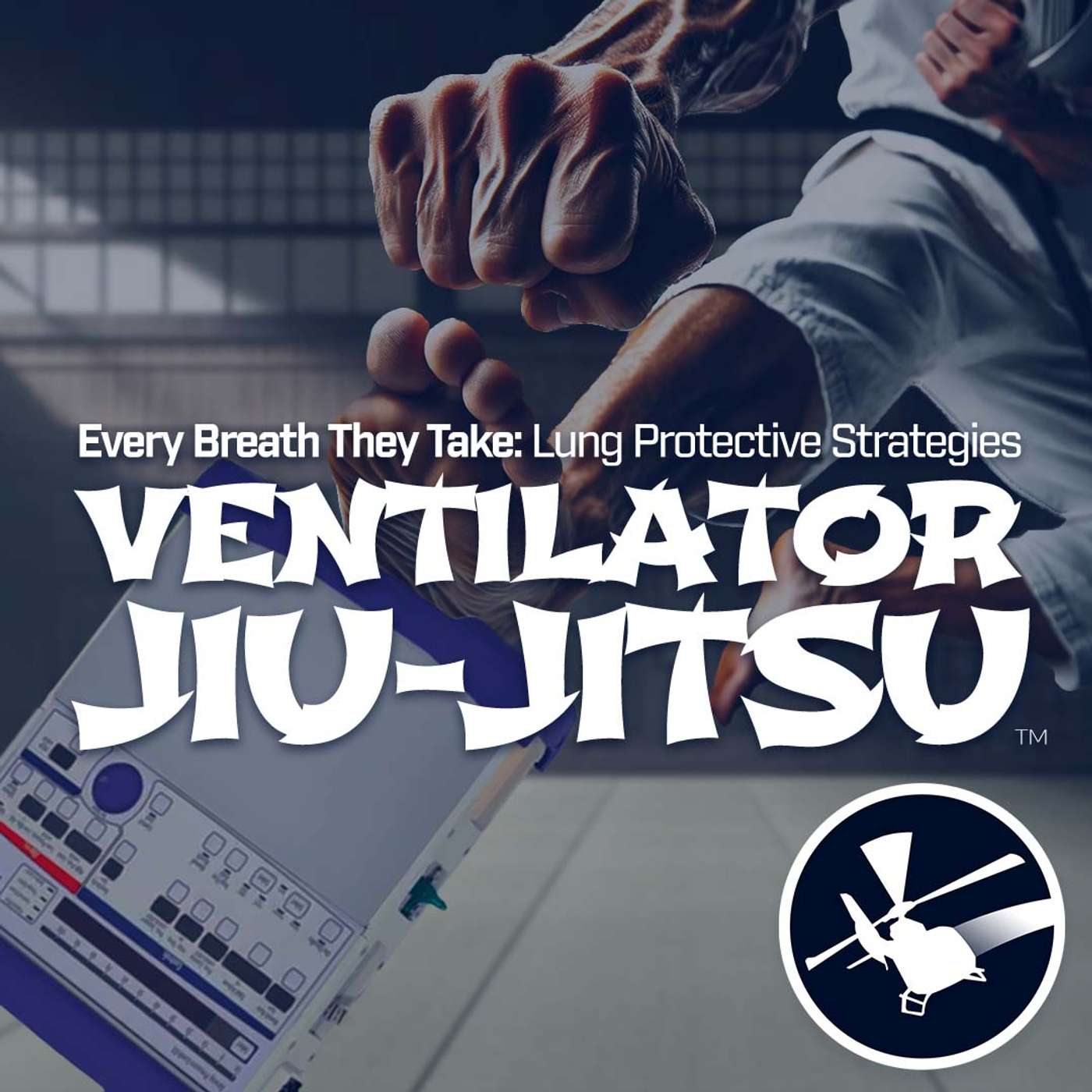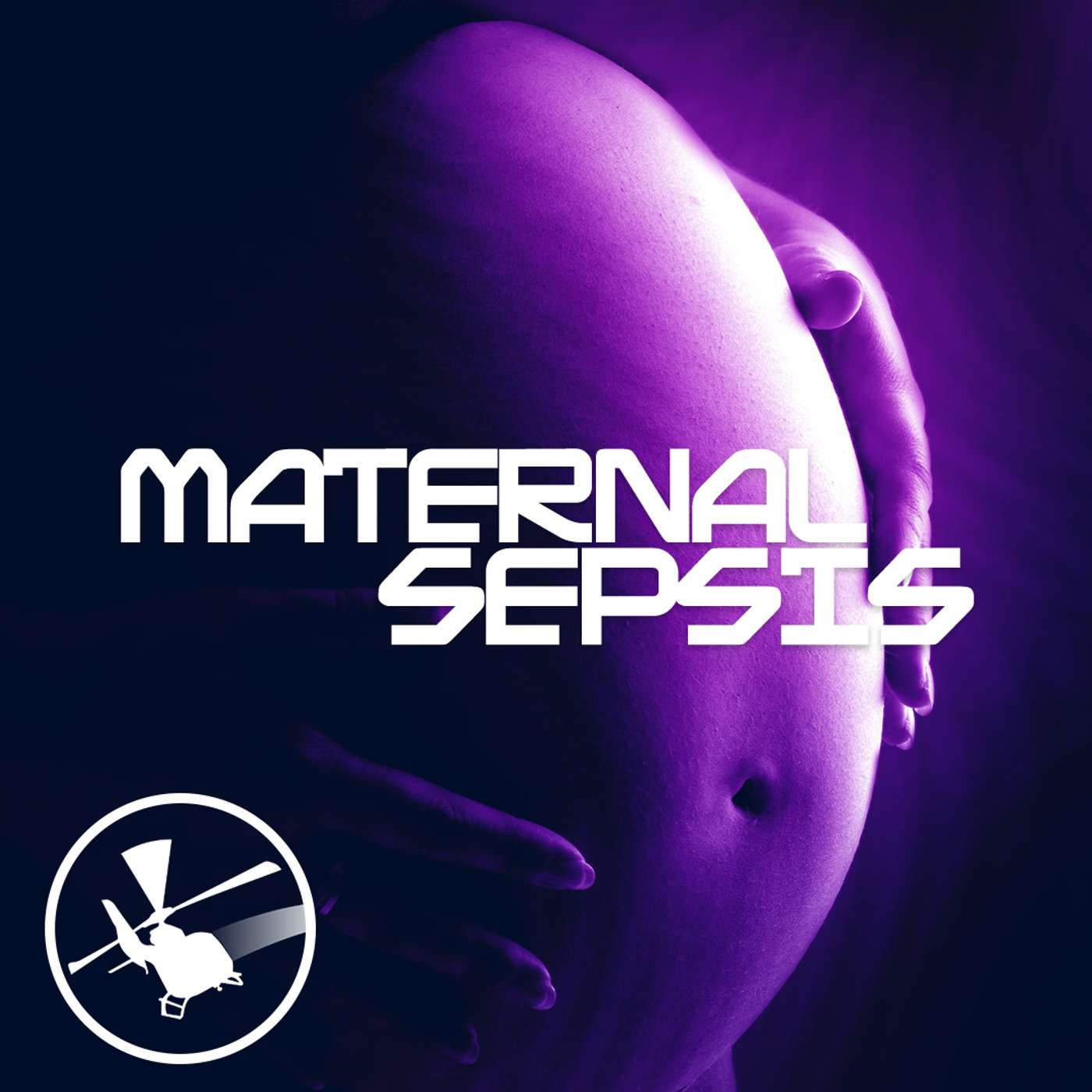Every Breath They Take: REALLY Delivering Lung Protective Ventilation
Description
In this episode of the FlightBridgeED Podcast, part of our "Every Breath They Take" series on respiratory critical care, Dr. Michael Lauria explores whether we truly protect the lungs during mechanical ventilation. While the best evidence suggests keeping tidal volumes at 6 cc/kg and plateau pressures below 30 cm H2O, is that enough? ARDS is a complex lung pathology, and as we unravel its intricacies, there may be more to consider.
Join us as we explore the popular concept of driving pressure and introduce the emerging idea of mechanical power. While plateau pressure remains the gold standard, these additional metrics may provide further guidance for adjusting ventilation strategies and minimizing ventilator-induced lung injury, especially in critical care transport settings. Whether you're new to the field or a seasoned professional, this episode offers valuable insights into advanced respiratory management.
Listen to FlightBridgeED anywhere you get your podcasts, or visit us at flightbridgeed.com/explore. While there, explore our other fantastic, free content and award-winning courses to help you excel in your critical care practice.
TAKEAWAYS
- Mechanical ventilation is a double-edged sword. It can maintain oxygenation and ventilation but can also damage the lungs.
- Lung protective ventilation prevents ventilator-induced lung injury, especially in acute respiratory distress syndrome (ARDS).
- Maintaining a plateau pressure below 30 cmH2O is an essential goal in lung protective ventilation.
- Driving pressure, the difference between plateau pressure and PEEP, is a surrogate for transpulmonary pressure and may be a useful parameter to consider in lung protective ventilation.
- Keeping driving pressure < 15 cmH2O may be beneficial.
- Driving pressure might be helpful in titrating peep and optimizing lung recruitment, as well as in identifying patients who may benefit from smaller tidal volumes, even if the plateau pressure is below 30.
- Mechanical power, which represents the energy delivered to the lung over time, is a newer concept that requires further research to determine its role in lung protective ventilation.
- Optimizing the ventilatory and inspiratory flow rates (in addition to peep, plateau pressure, and tidal volume) may help reduce mechanical power below 17-22 J/min.
REFERENCES
- Amato MB, Meade MO, Slutsky AS, et al. Driving pressure and survival in the acute respiratory distress syndrome. N Engl J Med. Feb 19 2015;372(8):747-55. doi:10.1056/NEJMsa1410639
- Azizi BA, Munoz-Acuna R, Suleiman A, et al. Mechanical power and 30-day mortality in mechanically ventilated, critically ill patients with and without Coronavirus Disease-2019: a hospital registry study. J Intensive Care. Apr 6 2023;11(1):14. doi:10.1186/s40560-023-00662-7
- Battaglini D, Fazzini B, Silva PL, et al. Challenges in ARDS Definition, Management, and Identification of Effective Personalized Therapies. J Clin Med. Feb 9 2023;12(4)doi:10.3390/jcm12041381
- Battaglini D, Sottano M, Ball L, Robba C, Rocco PRM, Pelosi P. Ten golden rules for individualized mechanical ventilation in acute respiratory distress syndrome. J Intensive Med. Jul 2021;1(1):42-51. doi:10.1016/j.jointm.2021.01.003
- Bellani G, Laffey JG, Pham T, et al. Epidemiology, Patterns of Care, and Mortality for Patients With Acute Respiratory Distress Syndrome in Intensive Care Units in 50 Countries. Jama. Feb 23 2016;315(8):788-800. doi:10.1001/jama.2016.0291
- Bugedo G, Retamal J, Bruhn A. Driving pressure: a marker of severity, a safety limit, or a goal for mechanical ventilation? Crit Care. Aug 4 2017;21(1):199. doi:10.1186/s13054-017-1779-x
- Chiumello D, Froio S, Mistraletti G, et al. Gas exchange, specific lung elastance and mechanical power in the early and persistent ARDS. J Crit Care. Feb 2020;55:42-47. doi:10.1016/j.jcrc.2019.09.022
- Coppola S, Caccioppola A, Froio S, et al. Effect of mechanical power on intensive care mortality in ARDS patients. Crit Care. May 24 2020;24(1):246. doi:10.1186/s13054-020-02963-x
- Cressoni M, Cadringher P, Chiurazzi C, et al. Lung inhomogeneity in patients with acute respiratory distress syndrome. Am J Respir Crit Care Med. Jan 15 2014;189(2):149-58. doi:10.1164/rccm.201308-1567OC
- Duan J, Wang S, Liu P, et al. Early prediction of noninvasive ventilation failure in COPD patients: derivation, internal validation, and external validation of a simple risk score. Ann Intensive Care. Sep 30 2019;9(1):108. doi:10.1186/s13613-019-0585-9
- Gattinoni L, Collino F, Camporota L. Mechanical power: meaning, uses and limitations. Intensive Care Med. Apr 2023;49(4):465-467. doi:10.1007/s00134-023-06991-3
- Gattinoni L, Marini JJ, Pesenti A, Quintel M, Mancebo J, Brochard L. The "baby lung" became an adult. Intensive Care Med. May 2016;42(5):663-673. doi:10.1007/s00134-015-4200-8
- Gattinoni L, Tonetti T, Quintel M. Regional physiology of ARDS. Crit Care. Dec 28 2017;21(Suppl 3):312. doi:10.1186/s13054-017-1905-9
- Goligher EC, Dres M, Patel BK, et al. Lung- and Diaphragm-Protective Ventilation. Am J Respir Crit Care Med. Oct 1 2020;202(7):950-961. doi:10.1164/rccm.202003-0655CP
- Guérin C, Papazian L, Reignier J, Ayzac L, Loundou A, Forel JM. Effect of driving pressure on mortality in ARDS patients during lung protective mechanical ventilation in two randomized controlled trials. Crit Care. Nov 29 2016;20(1):384. doi:10.1186/s13054-016-1556-2
- Ogbu OC, Martin GS, Murphy DJ. A Few Milliliters of Prevention: Lung-Protective Ventilation Decreases Pulmonary Complications. Crit Care Med. Oct 2015;43(10):2263-4. doi:10.1097/ccm.0000000000001234
- Paudel R, Trinkle CA, Waters CM, et al. Mechanical Power: A New Concept in Mechanical Ventilation. Am J Med Sci. Dec 2021;362(6):537-545. doi:10.1016/j.amjms.2021.09.004
- Sahetya SK, Hager DN, Stephens RS, Needham DM, Brower RG. PEEP Titration to Minimize Driving Pressure in Subjects With ARDS: A Prospective Physiological Study. Respir Care. May 2020;65(5):583-589. doi:10.4187/respcare.07102
- Serpa Neto A, Deliberato RO, Johnson AEW, et al. Mechanical power of ventilation is associated with mortality in critically ill patients: an analysis of patients in two observational cohorts. Intensive Care Med. Nov 2018;44(11):1914-1922. doi:10.1007/s00134-018-5375-6
- Simonis FD, Binnekade JM, Braber A, et al. PReVENT--protective ventilation in patients without ARDS at start of ventilation: study protocol for a randomized controlled trial. Trials. May 24 2015;16:22 6. doi:10.1186/s13063-015-0759-1
- Tongyoo S, Viarasilpa T, Deawtrakulchai P, Subpinyo S, Suppasilp C, Permpikul C. Comparison of limited driving pressure ventilation and low tidal volume strategies in adults with acute respiratory failure on mechanical ventilation: a randomized controlled trial. Ther Adv Respir Dis. Jan-Dec 2024;18:17 534666241249152. doi:10.1177/17534666241249152
- van Meenen DMP, Algera AG, Schuijt MTU, et al. Effect of mechanical power on mortality in invasively ventilated ICU patients without the acute respiratory distress syndrome: An analysis of three randomised clinical trials. Eur J Anaesthesiol. Jan 1 2023;40(1):21-28. doi:10.1097/eja.0000000000001778
- Wu HP, Chu CM, Chuang LP, et al. The Association between Mechanical Power and Mortality in Patients with Pneumonia Using Pressure-Targeted Ventilation. Diagnostics (Basel). Oct 10 2021;11(10)doi:10.3390/diagnostics11101862
- Yehya N, Hodgson CL, Amato MBP, et al. Response to Ventilator Adjustments for Predicting Acute Respiratory Distress Syndrome Mortality. Driving Pressure versus Oxygenation. Ann Am Thorac Soc. May 2021;18(5):857-864. doi:10.1513...

